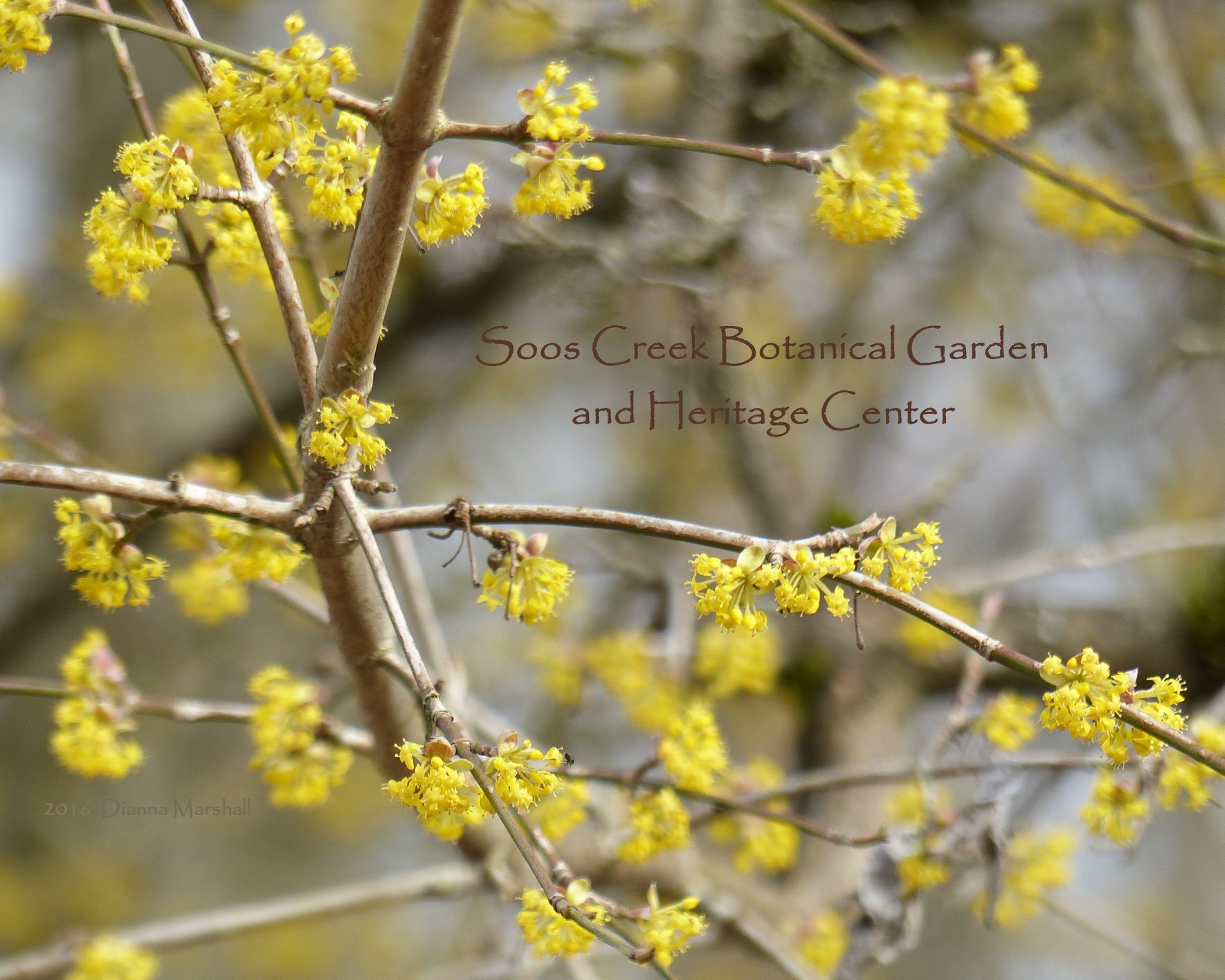
Birds of Soos Creek
SCBG is a wonderful place to explore and expand upon your knowledge and enjoyment of both flora and fauna. Variety abounds throughout the garden.
As birds can quickly and easily show up one day and not the next, the following is only a guide of our NW song birds, many of which you can experience within these varied habitats. Come prepared to connect through sight and song with the following species commonly found at SCBG as they go about their daily tasks focused on survival and reproduction.
This listing is arranged starting with the birds you are most likely to encounter and considers species tendencies, rather than by color or size. High means that those birds are more commonly found in the taller trees or soaring in the sky. Medium refers to mid tree height or larger shrubs. Low refers to lower branches, smaller shrubs or on the ground. Commonality gives you an idea of the likelihood you will observe each species with minimum effort.
You can download and print out this list and bring it with you as you visit the Garden. Enjoy the horticulture while at the same time work your way through identifying as many of the species as you can. Maybe you will see a bird not shown on this list – Hurray! Tell one of our volunteers or drop a note in the donation box at the information kiosk, we would like to share in your discovery!
To become more involved in efforts to preserve and enhance wild bird habitat and participate in local citizen science, contact The Rainier Audubon Society at https://rainieraudubon.org.
Wild Birds Unlimited in Covington WA is a contributing sponsor to Soos Creek Botanical Garden. Please visit their store for birding related supplies and gifts.
Ospreys are creatures of habit, returning to the same nest sites year after year. Across 132nd Ave SE from Soos Creek Botanical Garden is Auburn Mountain View High School. On one of the tall light standards that illuminate the baseball field, Ospreys have built a large nest of sticks each year. Winter wipes it out but in April these migrating birds build again and launch their cycle of nesting, hatching and fledging a new brood. In Summer, visitors to The Garden can be treated to their calls and aerial dynamics
The hardy Anna’s Hummingbird is a year-round resident in our northern latitudes, at least where the marine environment moderates the temperatures in the winter. They have adapted to the scarcity of flowering plants by becoming very good at two things: First, gathering the energy they need by finding overwintering insects and capitalizing on the high sugar content of tree sap. Feeders put out by birding hobbyists also play a role. Second, they are expert in energy management by not wasting effort on activities not directly associated with survival and being able to put their little bodies into a lowered physiological state called “torpor” to conserve resources. Tough and smart little guys
The Dark-eyed Junco, Oregon variety (Junco oreganus) is one of the sub-species of the Dark-eyed Junco and is usually seen west of the Rocky Montains, showing up in the eastern regions during the winter months.
The Dark-eyed Junco is a member of the sparrow family. This forest dwelling bird is regularly seen around backyard birdfeeders for a few weeks during the spring and fall migration periods. Although it is usually a ground feeder, it is not uncommon to see them singing from trees.
We have wild birds throughout the garden but also a few in the Louie/Christensen Aviary. Though he doesn't have a mate, our Golden Pheasant/ Chinese Pheasant (Chrysolophus pictus) is already wearing his dating plumage for spring. What a beauty!
Even though they look like ducks, American coots are technically considered rails. As they swim around, acting like ducks, they have a secret lurking beneath the water. That's right, it's their odd chicken-like feet!
While coots don't have webbed feet like ducks, they have long toes with lobes of skin that help them swim. These lobes stay out of the way as coots walk and run.
Visit Us
29308 132nd Ave SE Auburn, WA 98092
Hours
Wednesday–Saturday
10am–4pm
The Garden is open for the season from early March to late October. Check our calendar for exact dates.
Contact
(253) 639-0949
info@sooscreekbotanicalgarden.org















